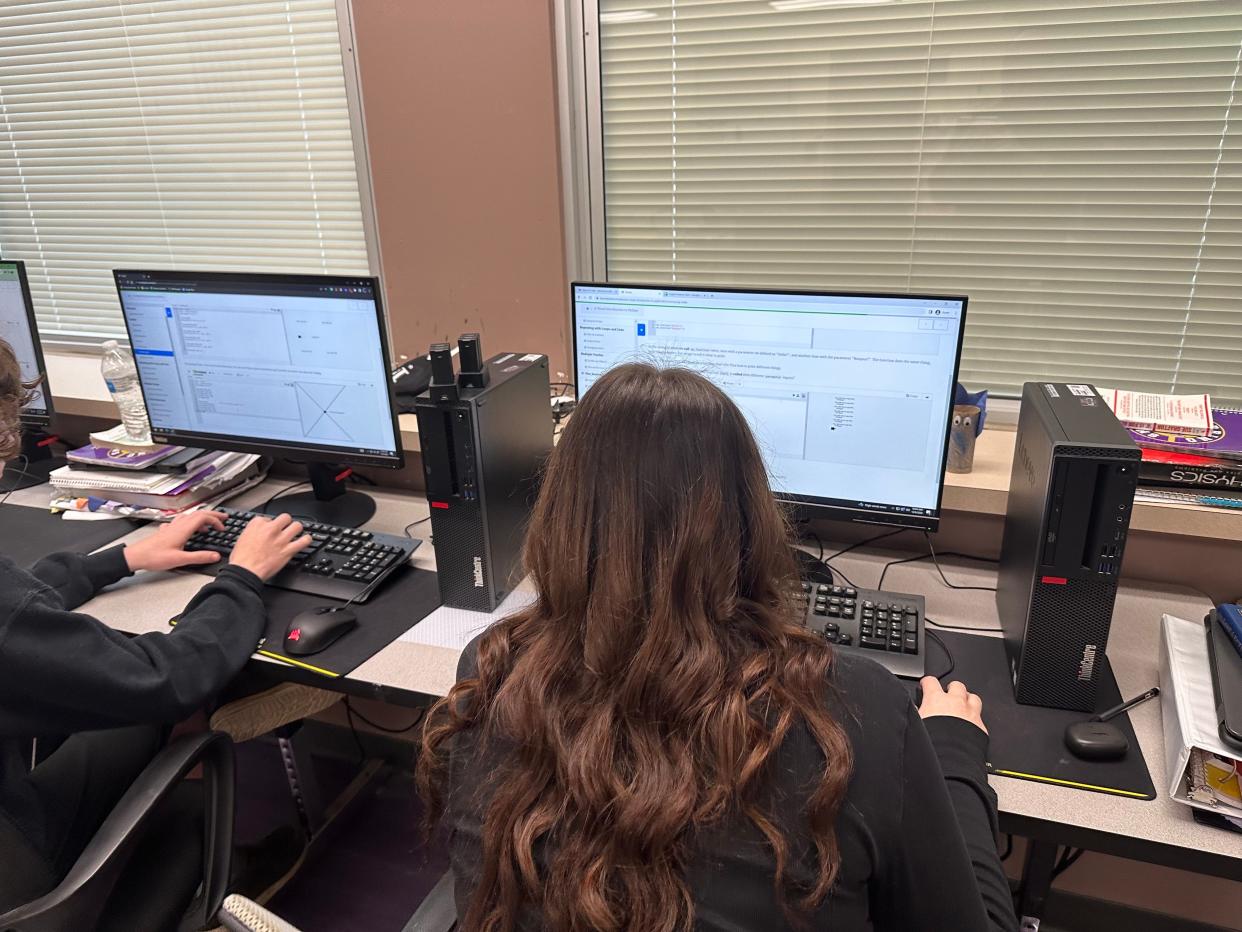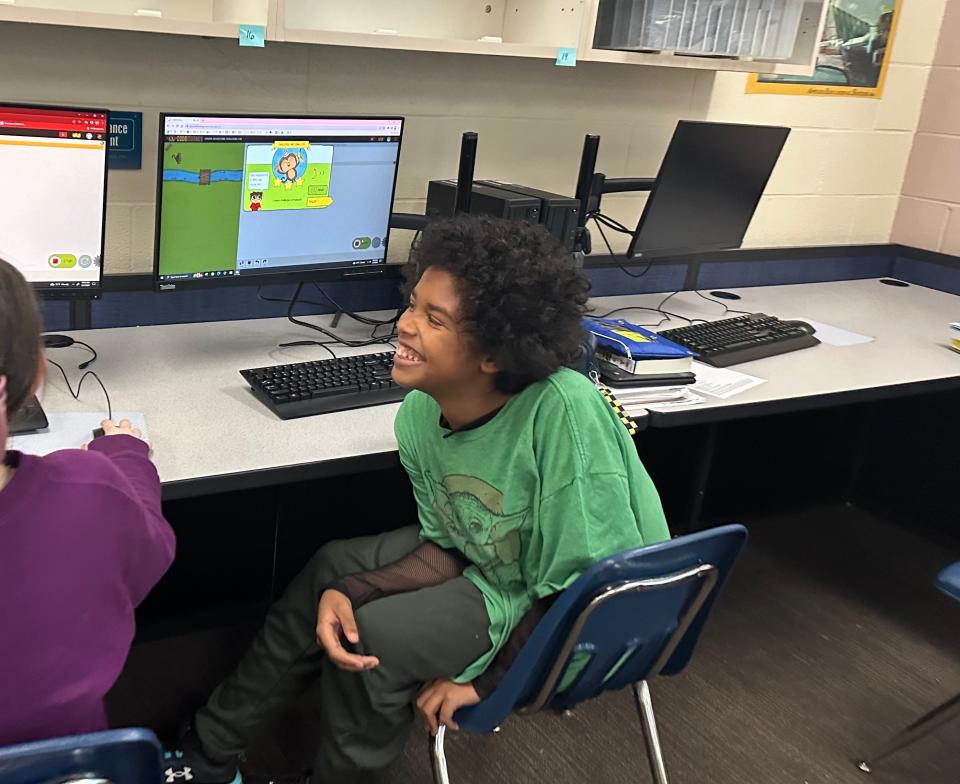Sebring students get special lessons in coding

Students in the Sebring McKinley Jr./Sr. High STEM and technology classes of Brad Kirkland spent their class time in early December working on computer coding skills.
The students were taking part in the “Hour of Code,” a weeklong event dedicated to helping to make computer coding more accessible to all skill levels.
The Educational Service Center of Eastern Ohio led the effort locally, sharing access to tutorials and activities, and providing coding certificates of completion to students.
Code.org, the organization behind the Hour of Code movement, and many coding websites have opened up their platforms to include free content for the week.

Students in Kirkland’s Robotics, Intro to Engineering, Carpentry 1 and 2, and Drones classes all participated, and gained hands-on experience with coding websites such as CodeMonkey, CodeCombat and Trinket. The students got to apply commands to generate responses through animation, games and simple drawings.
“We discussed the importance of coding, the different types of code and their various uses, including examples of using “if commands” to switch on and off real-world applications,” said Kirkland. “And then we practiced using these sites’ formats to implement different types of code logic.”
To address the initial intimidation of coding and spark interest and creativity among his students, Kirkland began the lesson with a personal story of how his father used coding to create the first wireless meat thermometer more than a decade ago.
“He used an ESP 8266 WiFi chip that you can purchase on Amazon for less than $10, cut the wire of the meat thermometer that originally ran to a speaker in the thermometer’s circuit board, which is designed to sound off when the meat reaches a certain temperature, and then he re-routed it to the new microchip and programmed it with an if-then command, which signaled to his phone when the meat reached that temperature,” recalls Kirkland. “Once you understand how to create rules and apply simple commands using microchip boards, the world is your oyster.”
Kirkland followed his father’s lead, and experimented with coding in everyday household activities. He programmed a digital soil moisture sensor to water his plants on command.
“I wanted students to grasp the endless possibilities of implementing coding beyond the computer and how we typically think it’s applied,” explained Kirkland.
Kirkland’s classes aren’t some students’ first exposure to the idea. Sebring Local offers two middle school courses that introduce code – App Creators and Robotics. Students learn to program applications to function on tablets and use code to make robots move.
This article originally appeared on The Alliance Review: Sebring Local students get special lessons in coding

